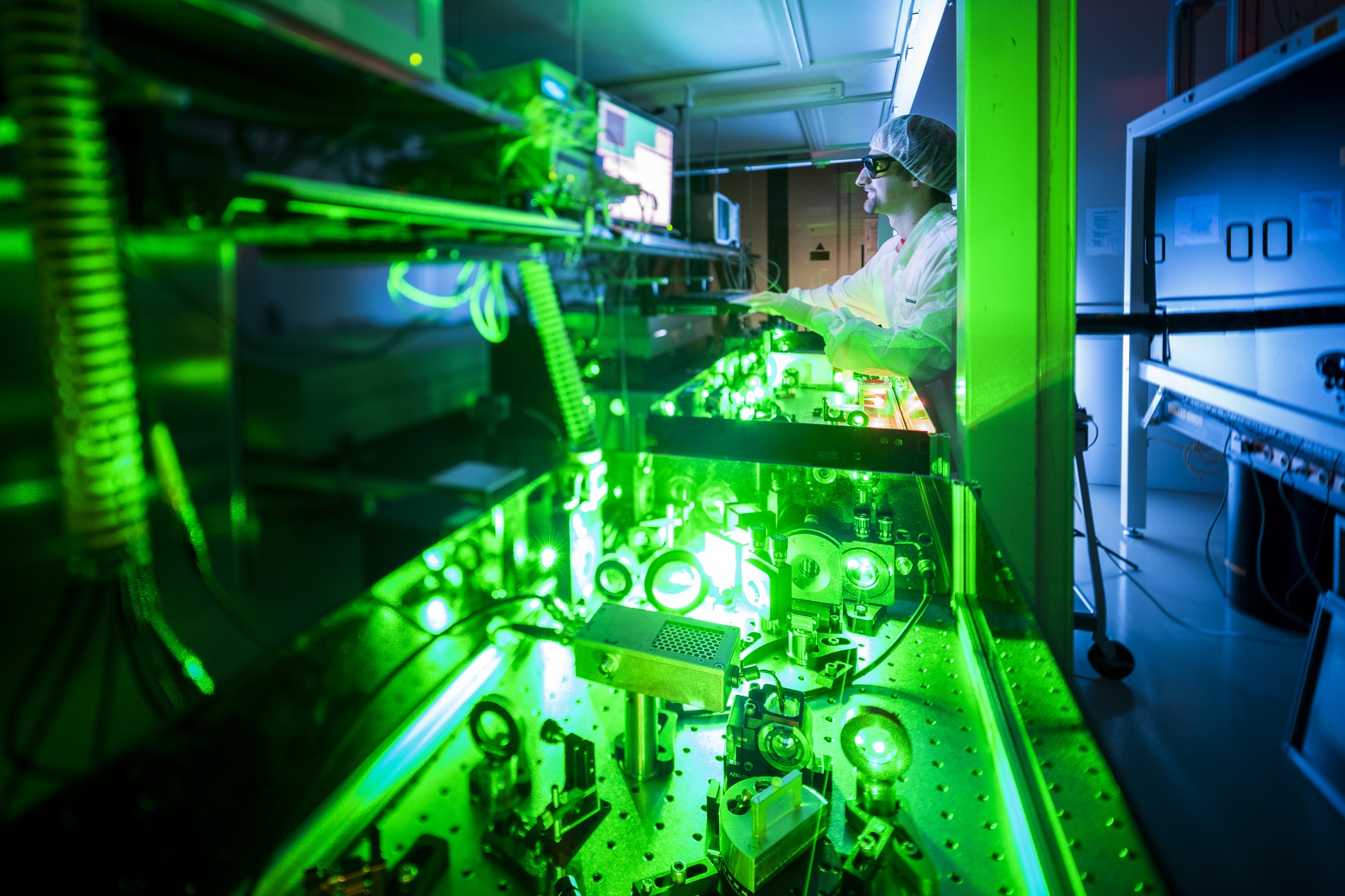19.03.2018
The use of nanostructured targets enables the PHELIX laser to accelerate considerably more particles to substantially higher energies. The experiment with the high-performance laser was conducted at the GSI/FAIR campus by scientists from GSI and FAIR as well as from Goethe University Frankfurt and the Helmholtz Institute Jena. The innovative nano target was created at GSI’s Materials Research department. The results give laser-driven particle acceleration a boost, and also harbor considerable potential for future plasma research at the FAIR accelerator facility.
One of Germany’s strongest lasers is located on the campus of GSI and FAIR: the Petawatt High-Energy Laser for Ion Experiments (PHELIX). By focusing all of the light energy into a hair-thin beam, plasma physicists can use the laser to study states of matter under conditions that are similar to those inside stars and giant planets. However, they also test possible applications such as laser-driven particle acceleration. To do this, scientists shoot the laser at a target to study how the ultra-powerful pulse of light affects the material. Now, scientists have, for the first time, tested a target with a nanowire surface instead of one with a smooth surface. “In the new surface, extremely thin nanowires are located close to one another like tall tree trunks in a dense forest that is bombarded from above by a laser,” explains Paul Neumayer, a plasma physicist at GSI and the director of the experiment. Nanotargets are extremely fragile structures. Until recently, laser pulses would destroy such targets before fully reaching them. In cooperation with the Helmholtz Institute Jena, the scientists at FAIR have greatly improved PHELIX’s temporal contrast, which means the laser pulse is now extremely “cleanly” delineated in terms of time. As a result, the wires are immediately hit by the laser’s full energy density, thus stripping off the electrons from the target atoms at one blow. This creates an electrostatic field, which, in turn, can accelerate lightweight particles.
"The new target enabled us to accelerate 30 times more particles than with the normally employed smooth foil targets under the same conditions,” says Neumayer. “Moreover, we increased the energy of the accelerated particles by 2 to 2.5 times.” There are two reasons for this improvement. First, a nanotarget has a much higher surface area than a smooth one, thus intensifying the laser’s interaction with the material. Second, the laser pulse can penetrate deep into the target’s structure in the spaces between the wires. As a result, the laser energy can be deposited with much higher densities than would normally be achievable with the laser light.
In addition to making laser-driven particle acceleration more efficient, the new targets have another benefit: they greatly increase the X-ray emissions of the hot plasma. “This is not only a huge advantage for the measurement of exotic plasmas, but also opens up interesting prospects for the development of extremely intense short-pulsed X-ray sources for future FAIR experiments,” explains Neumayer.
The innovative nanotargets were developed by Dimitri Khaghani as part of his doctoral dissertation. Khaghani is a laser and plasma physicist who earned his doctorate at Goethe University Frankfurt. For his dissertation, he worked together very closely with GSI’s Materials Research department, which has been researching and producing nanowires for years. Nanowires grow in tiny channels in plastic foils. To create these channels, researchers first bombard the foils with heavy ions from a linear accelerator. The areas damaged along the ions’ path are then chemically etched to turn them into open channels that are subsequently filled using an electrochemical method. “This process enabled us to test nanowires made of different materials and of various lengths and diameters so that we could find out when laser acceleration is most efficient,” says Khaghani, who received the Giersch Excellence Grant and the Giersch Award for Outstanding Doctoral Thesis for his research with nanotargets. “The synergy effect achieved through the close cooperation between the Plasma Physics and Materials Research departments on the campus certainly contributed to the success of the experiments and enabled us to take a big step forward,” says Khaghani, who is now a postdoc at the Helmholtz Institute Jena.
More Information
Original publication: Nature Scientific Reports, „Enhancing laser-driven proton acceleration by using micro-pillar arrays at high drive energy“












